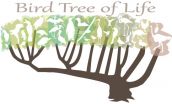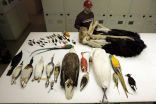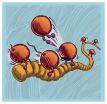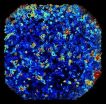(Press-News.org) Conventional wisdom holds that changing the views of voters on divisive issues is difficult if not impossible -- and that when change does occur, it is almost always temporary.
But Michael LaCour, a UCLA doctoral candidate in political science, and Donald Green, a Columbia University political science professor, have demonstrated that a single conversation can go a long way toward building lasting support for a controversial social issue. In addition -- nearly as surprisingly -- the effect tends to spill over to friends and family members.
The key is putting voters in direct contact with individuals who are directly affected by the issue. The findings are reported in a study that will be published Dec. 12 in the journal Science.
"You forget the message, but you remember the messenger," said LaCour, the study's lead author and a research affiliate at the California Center for Population Research at UCLA.
The issue LaCour and Green were studying was Americans' support for gay marriage, but LaCour is in the process of replicating the results with another hot-button issue, abortion rights. He hopes to eventually test whether a similar approach could shift people's attitudes toward undocumented immigrants.
The project unfolded in 2013, during the month leading up to a U.S. Supreme Court decision that effectively overturned California's Proposition 8, which had outlawed same-sex marriage in 2008. The study evaluated a long-standing door-to-door campaign in support of gay marriage by the nonprofit Los Angeles LGBT Center.
LaCour and Green began by identifying California precincts that had supported the ban on gay marriage, eventually settling on an especially conservative area of Southern California. They then used voter rolls to invite every voter in those precincts, as well as their housemates, to participate in an Internet survey on politics, including only two questions about support for same-sex marriage. (Involving housemates in the study would later allow the researchers to measure whether changes in voters' attitudes ultimately influence those in their social networks.) Eventually, researchers would survey the same 9,500 voters four times over the course of a year.
Participants were randomly divided into three groups. One received house calls from specially trained LGBT Center canvassers who advocated gay marriage. Half of the canvassers were gay; the other half were straight.
A second group received visits from the same canvassers, but the canvassers discussed the benefits of recycling -- not the topic of gay marriage. In these visits, the canvassers did not reveal whether they were gay or straight.
The third set was not visited by canvassers.
The gay marriage canvassers asked voters what they enjoyed about being married (if the subjects were married) or the benefits they'd witnessed in the lives of married friends and relatives (if they weren't). Gay canvassers then revealed their own sexual orientation and explained that they longed for the same benefits the interviewees had described, and straight canvassers discussed how they hoped a close relative who was gay could enjoy the benefits of marriage.
The average length of these conversations was only 22 minutes, but the visits had dramatic effects.
In follow-up surveys three days later, the researchers found that attitudes were unchanged among the voters who discussed recycling and those who weren't visited by the interviewers. But among those who spoke with canvassers about gay marriage, support had jumped eight percentage points.
"The change was equivalent to transforming a Midwesterner into a New Englander on the issue of gay marriage," quipped Green, a highly regarded authority on research methods in the social sciences.
Within three weeks, however, conventional wisdom kicked in: Support for gay marriage among the voters who had been approached by straight canvassers retreated to where it had originally been; any effect of the conversation had been wiped out. Among voters who had been approached by gay canvassers, however, the attitude shift persisted. In fact, support for gay marriage among that group grew even further when the Supreme Court handed down its decision -- jumping an additional seven percentage points. The researchers also found that among these voters' the support remained a year later.
Green, a 27-year veteran researcher and author of four books and more than 100 studies, couldn't believe what LaCour had found. So he advised him to rerun the experiment. The second round replicated the original results.
"Previously, I've been really pessimistic about the prospect of changing someone's views, and that kind of pessimism suffuses much of the research on attitude change," Green said. "But the results of our study convinced me that enduring change is possible. They're eye-popping."
Housemates of voters who spoke to straight canvassers didn't change their attitudes on gay marriage. But the housemates of voters who had spoken with the gay canvassers registered a three percentage-point increase, and their support for gay marriage continued to rise throughout the following year, especially after the decision.
"This suggested to us that views were being reinforced by conversations going on in the household," Green said.
By the end of the year, support for gay marriage drifted slightly upward among the other voters in the study, reflecting the growing increased acceptance of gay marriage in the wake of the court's decision and its simultaneous overturn of the Defense of Marriage Act. But the increase in support for gay marriage among those who had been contacted by gay canvassers was five times higher than that of the other participants.
"When those being denied marriage equality have names and faces, hearts and minds are changed," LaCour said. "And that's what we found."
INFORMATION:
A new computational technique developed at The University of Texas at Austin has enabled an international consortium to produce an avian tree of life that points to the origins of various bird species. A graduate student at the university is a leading author on papers describing the new technique and sharing the consortium's findings about bird evolution in the journal Science.
The results of the four-year effort -- which relied in part on supercomputers at the university's Texas Advanced Computing Center (TACC) -- shed light on the timing of a "big bang" in bird evolution, ...
RIVERSIDE, Calif. - The absence of teeth or "edentulism" has evolved on multiple occasions within vertebrates including birds, turtles, and a few groups of mammals such as anteaters, baleen whales and pangolins. Where early birds are concerned, the fossil record is fragmentary. A question that has intrigued biologists is: Based on this fossil record, were teeth lost in the common ancestor of all living birds or convergently in two or more independent lineages of birds?
A research team led by biologists at the University of California, Riverside and Montclair State University, ...
LOS ANGELES, Dec. 11, 2014-- It's possible to lastingly persuade conservative voters to support a controversial issue like marriage for same-sex couples--and at a greatly accelerated rate compared to their neighbors--according to groundbreaking data published in this week's issue of the peer-reviewed journal Science. The 12-month study also shows how the Los Angeles LGBT Center's voter persuasion methods reduced anti-gay prejudice and may have the potential to reduce other forms of prejudice.
The independent researchers who led the study, prominent Columbia University ...
This news release is available in Danish and also Chinese on EurekAlert! Chinese.
An international effort to sequence the genomes of 45 avian species has yielded the most reliable tree of life for birds to date. This new avian family tree helps to clarify how modern birds--the most species-rich class of four-limbed vertebrates on the planet--emerged rapidly from a mass extinction event that wiped out all of the dinosaurs approximately 66 million years ago.
It reveals how some of the earliest bird species diverged, answering many long-standing questions about the common ...
SALT LAKE CITY, Dec. 11, 2014 - University of Utah researchers ran biochemical analysis and computer simulations of a livestock virus to discover a likely and exotic mechanism to explain the replication of related viruses such as Ebola, measles and rabies. The mechanism may be a possible target for new treatments within a decade.
"This is fundamental science. It creates new targets for potential antiviral drugs in the next five to 10 years, but unfortunately would not have an impact on the current Ebola epidemic" in West Africa, says Saveez Saffarian, senior author of ...
(SALT LAKE CITY) - Examination of DNA from 21 primate species - from squirrel monkeys to humans - exposes an evolutionary war against infectious bacteria over iron that circulates in the host's bloodstream. Supported by experimental evidence, these findings, published in Science on Dec. 12, demonstrate the vital importance of an increasingly appreciated defensive strategy called nutritional immunity.
"We've known about nutritional immunity for 40 years," says Matthew Barber, Ph.D., first author and postdoctoral fellow in human genetics at the University of Utah. "What ...
How birds evolved to have characteristics including feathers, flight and song is revealed with new clarity in a major study of their family tree.
The international study charts a burst of evolution that took place after the mass extinction of dinosaurs, 66 million years ago. This step-change gave rise to nearly all of the species of birds that we see on the planet today - more than 10,000 varieties.
The four-year project - which included researchers from the University of Edinburgh's Roslin Institute - decoded and compared the entire genetic fingerprint of 48 bird species. ...
Two penguin genomes have been sequenced and analyzed for the first time in the open access, open data journal GigaScience. Timely for the holiday season, the study reveals insights into how these birds have been able to adapt to the cold and hostile Antarctic environment.
Antarctic penguins are subject to extremely low temperatures, high winds, and profound changes in daylight. They have developed complicated biological systems to regulate temperature and store energy for long-term fasting. Most studies have focused on the physiological and behavioral aspects of their ...
DURHAM, N.C. -- His office is filled with all sorts of bird books, but Duke neuroscientist Erich Jarvis didn't become an expert on the avian family tree because of any particular interest in our feathered friends. Rather, it was his fascination with how the human brain understands and reproduces speech that brought him to the birds.
"We've known for many years that the singing behavior of birds is similar to speech in humans -- not identical, but similar -- and that the brain circuitry is similar, too," said Jarvis, an associate professor of neurobiology at the Duke ...
VIDEO:
A microscopy system continuously measures responses to signaling chemicals in thousands of cells at a time.
Click here for more information.
Scientists have discovered a general principle for how cells could accurately transmit chemical signals despite high levels of noise in the system, they report in Science this week.
A cell's response to outside chemical signals depends on its physiological state, which can fluctuate considerably. Amounts of different kinds ...





